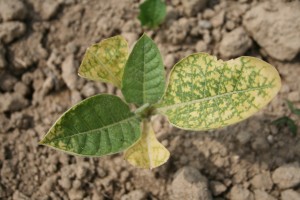Tobacco Insect Control and Transplant Water Treatments
go.ncsu.edu/readext?296866
en Español / em Português
El inglés es el idioma de control de esta página. En la medida en que haya algún conflicto entre la traducción al inglés y la traducción, el inglés prevalece.
Al hacer clic en el enlace de traducción se activa un servicio de traducción gratuito para convertir la página al español. Al igual que con cualquier traducción por Internet, la conversión no es sensible al contexto y puede que no traduzca el texto en su significado original. NC State Extension no garantiza la exactitud del texto traducido. Por favor, tenga en cuenta que algunas aplicaciones y/o servicios pueden no funcionar como se espera cuando se traducen.
Português
Inglês é o idioma de controle desta página. Na medida que haja algum conflito entre o texto original em Inglês e a tradução, o Inglês prevalece.
Ao clicar no link de tradução, um serviço gratuito de tradução será ativado para converter a página para o Português. Como em qualquer tradução pela internet, a conversão não é sensivel ao contexto e pode não ocorrer a tradução para o significado orginal. O serviço de Extensão da Carolina do Norte (NC State Extension) não garante a exatidão do texto traduzido. Por favor, observe que algumas funções ou serviços podem não funcionar como esperado após a tradução.
English
English is the controlling language of this page. To the extent there is any conflict between the English text and the translation, English controls.
Clicking on the translation link activates a free translation service to convert the page to Spanish. As with any Internet translation, the conversion is not context-sensitive and may not translate the text to its original meaning. NC State Extension does not guarantee the accuracy of the translated text. Please note that some applications and/or services may not function as expected when translated.
Collapse ▲Tobacco growers often apply insecticides in the greenhouse or at transplant to preventatively manage populations of green peach aphids and tobacco flea beetles. In recent years, some growers have also begun to use Coragen at transplant to manage early season populations of tobacco budworms. These preventive management strategies have some advantages and some disadvantages. Their main advantage is that they can provide long-term control of common tobacco pests. The main disadvantages of greenhouse or transplant water treatments are that they may not be necessary, may not provide protection for the full period of insect activity, and some insecticides may negatively impact plants under certain conditions.

Recently planted tobacco plant with potential post-transplant phytotoxicity symptoms associated with greenhouse insecticide use. Photo: Hannah Burrack
Today, and agent asked about another potential issue, specifically associated with transplant water treatments. A grower had used imidacloprid (Admire Pro, in this case) in their transplant water and noticed that two weeks after transplant, their plants were damaged by flea beetles. This is uncommon, as imidacloprid is very effective against flea beetles in lab and field experiments. I suggested to the agent that this lack of activity may be due to several potential causes:
- If the plants had not grown much since transplant, they may not have taken up enough of the material to kill flea beetles.
- Alternatively, frequent rains may have moved material out of the (very small) root zone, and it may be inaccessible to the plant, also leading to poor uptake.
- Application equipment may influence how transplant water treatments perform. Specifically, if material is being applied from a non-pressurized (gravity fed) system, flow rate will be highly variable depending on how full the tank it. It will be fast if the tank is full and slow if the tank is nearly empty. This means that plants could receive different rates of material depending on how full the tank was while they were being planted. For this reason, manufacturers often recommend the use of pressurized tanks for transplant water applications on pesticide labels.
- Where materials are mixed can also influence rate. To ensure a uniform rate, materials should either be mixed in a nurse tank and added to the setter tank as a finished solution, or the setter tank should be completely emptied before new water and material are mixed.
What options does this grower have now? First, he needs to determine if the flea beetles are present in numbers that exceed the economic threshold of 4 per plant. If they do not, then treatment is not necessary. If beetles are present in numbers exceeding threshold, rescue treatments are listed in the North Carolina Agricultural Chemicals Manual. For next year, he could consider applying imidacloprid in the greenhouse two to five days before transplant, where it will have time to move into the plant.


